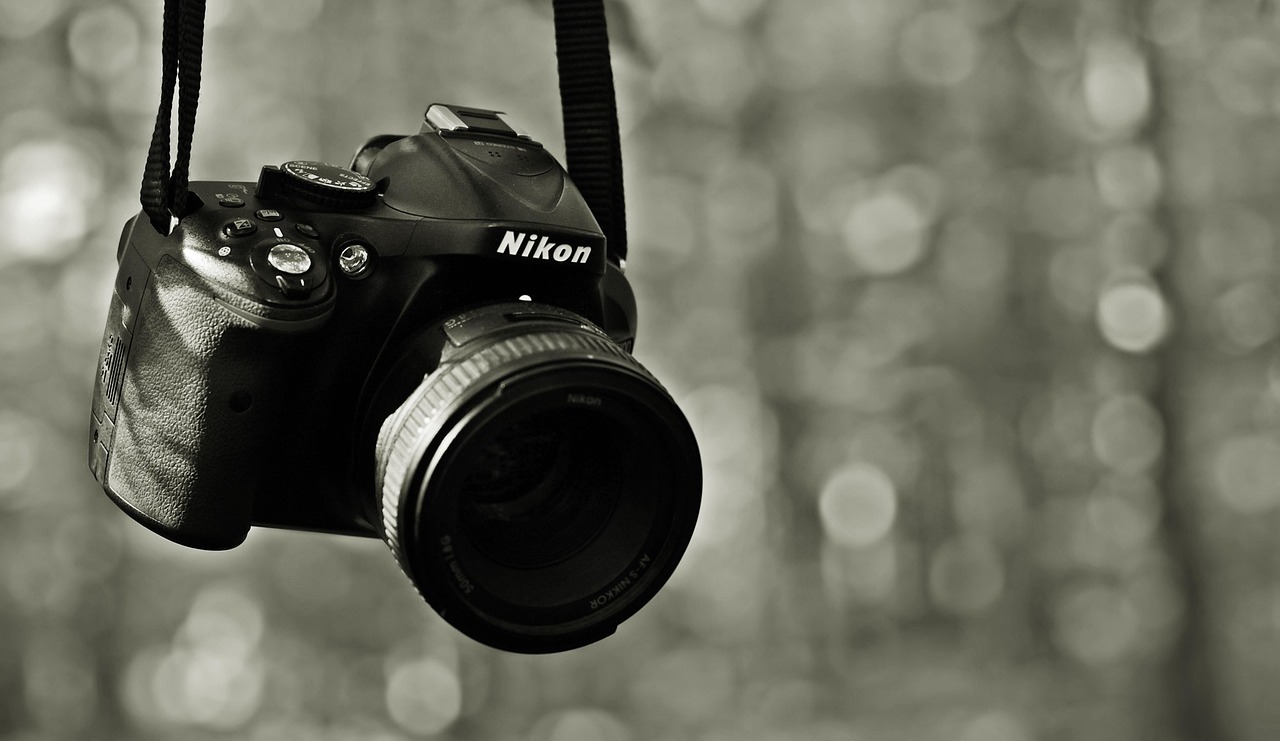This article provides a comprehensive guide on the methods and technologies available for transferring videos wirelessly from action cameras to smartphones, ensuring seamless sharing and storage.
Wireless video transfer offers numerous advantages, making it an appealing choice for action camera users. The primary benefits include:
- Convenience: No need for tangled cables or additional devices.
- Speed: Quickly share high-quality footage without delays.
- Accessibility: Easily access and manage your videos on your smartphone.
Understanding the connection methods is vital for effective video transfer. Action cameras typically connect to smartphones using:
- Bluetooth: Good for small files, but slower.
- Wi-Fi: Ideal for larger video files; offers faster transfer speeds.
- App-based connections: Often required for seamless integration and control.
Bluetooth is a widely used method for connecting devices. It allows users to transfer videos wirelessly, although it does have limitations:
- Speed: Bluetooth is generally slower than Wi-Fi.
- Range: Limited connectivity range may affect transfer capabilities.
To enable Bluetooth:
1. On your action camera, navigate to settings and enable Bluetooth.2. On your smartphone, go to Settings > Bluetooth and turn it on.3. Pair the devices by selecting your camera from the available devices list.
Common issues during Bluetooth transfers may include:
- Connection fails: Ensure both devices are discoverable.
- Slow transfers: Disconnect other Bluetooth devices.
Wi-Fi connections are often preferred for transferring larger video files due to their speed and reliability. To set up a Wi-Fi connection:
1. Enable Wi-Fi on your action camera.2. Connect your smartphone to the camera's Wi-Fi network.3. Use the camera's app to initiate the transfer.
Most action cameras require specific applications for video transfer. Popular options include:
- Official Manufacturer Apps: Designed specifically for their devices, offering seamless integration.
- Third-Party Apps: Provide enhanced functionality for editing and sharing.
To maintain video quality during transfer, consider:
- Adjusting settings: Ensure your action camera is set to the highest quality.
- Using Wi-Fi: Prefer Wi-Fi over Bluetooth for larger files.
Despite the convenience, users may face challenges:
- Slow transfer speeds: Factors like distance and interference can affect speed.
- Connection drops: Ensure a stable connection and proximity between devices.
Security is a valid concern. To ensure safe transfers:
- Use secure networks: Avoid public Wi-Fi for sensitive videos.
- Enable encryption: If available, use encryption settings in your camera app.
Each brand has unique methods for video transfer. Key brands include:
- GoPro: Utilizes the GoPro app for easy transfers.
- DJI: Offers the DJI Mimo app for video management.
- Insta360: Uses the Insta360 app for enhanced editing features.
As technology evolves, so do methods for video transfer. Emerging trends include:
- Faster protocols: New Wi-Fi standards promise quicker transfers.
- AI integration: Smart features for automatic editing and sharing.
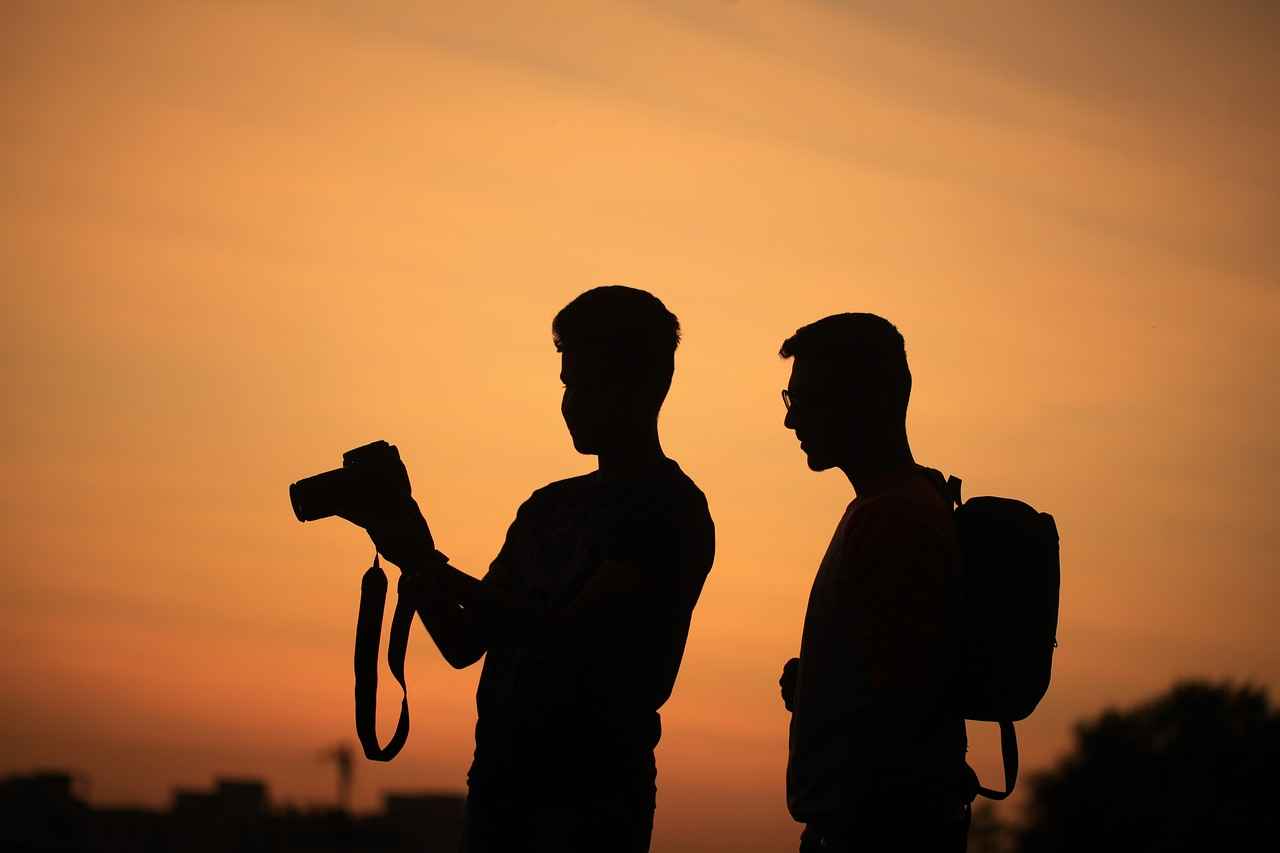
What Are the Benefits of Wireless Video Transfer?
Wireless video transfer has revolutionized the way users share and manage their footage, offering an array of convenience and speed that traditional methods simply cannot match. This technology enables users to send video files from their action cameras directly to their smartphones or other devices without the need for cumbersome cables or additional hardware. In this section, we delve into the key advantages of wireless video transfer, highlighting why it has become an essential feature for modern videographers.
- Convenience: One of the most significant benefits of wireless video transfer is the ease of use. Users can initiate transfers with just a few taps on their device, eliminating the need to physically connect devices with cables. This is particularly useful when on the go, allowing for quick sharing of content.
- Speed: Wireless technology, especially Wi-Fi connections, can facilitate faster transfer speeds compared to traditional methods. This is crucial for users who need to share large video files quickly, such as during events or while traveling.
- Real-Time Sharing: With wireless video transfer, users can share their footage in real-time on social media platforms or with friends and family. This immediacy enhances the sharing experience and allows for instant feedback.
- Increased Flexibility: Wireless transfer allows users to send videos from virtually anywhere, as long as they have a stable internet connection. This flexibility is particularly advantageous for action sports enthusiasts who may be in remote locations.
- Reduced Wear and Tear: By eliminating the need for physical connections, users can reduce the wear and tear on their device ports. This can extend the lifespan of both the action camera and smartphone.
- Cloud Integration: Many wireless transfer solutions integrate seamlessly with cloud storage services. This means users can automatically upload their videos to the cloud, ensuring their footage is backed up and accessible from any device.
Furthermore, wireless video transfer supports a variety of formats and resolutions, making it suitable for different types of video content. Whether you’re capturing high-definition action shots or casual videos, the technology adapts to your needs.
As we continue to embrace a more connected world, the benefits of wireless video transfer will only become more pronounced. From professional filmmakers to casual users, the ability to transfer and share videos effortlessly is a game changer, enhancing creativity and collaboration.
In summary, the advantages of wireless video transfer are extensive, encompassing convenience, speed, and flexibility. As technology continues to advance, these benefits are likely to expand, making wireless transfers an indispensable tool for anyone looking to share their video content quickly and efficiently.
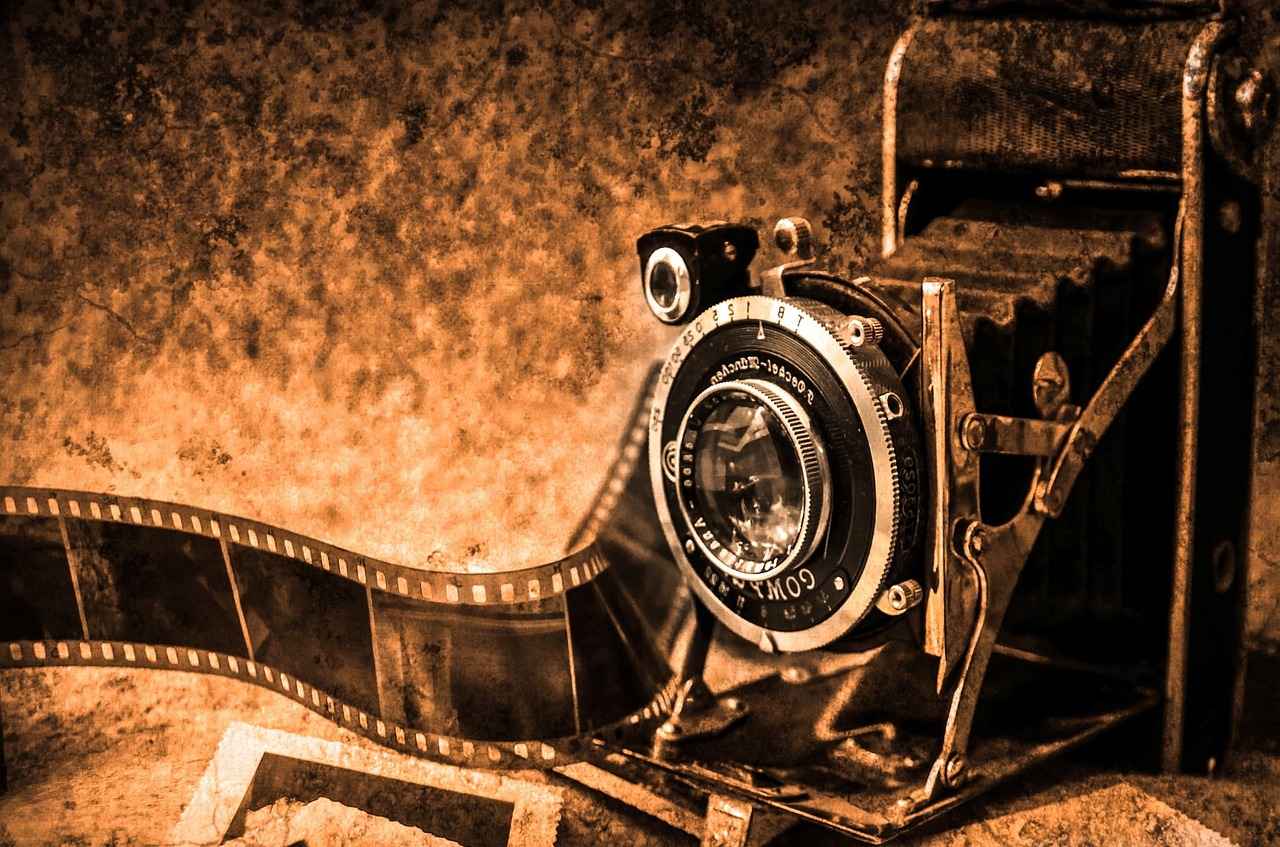
How Do Action Cameras Connect to Smartphones?
Understanding the connection methods between action cameras and smartphones is crucial for seamless video transfer. This section discusses the three primary methods: Bluetooth, Wi-Fi, and app-based connections, outlining how each method facilitates video transfer and the unique advantages they offer.
Bluetooth Connectivity
Bluetooth is a widely used technology that allows devices to connect wirelessly over short distances. When it comes to action cameras, Bluetooth primarily serves as a method for establishing a connection with smartphones for basic tasks like remote control and low-resolution video transfers. The setup process is typically straightforward:
- Enable Bluetooth on both the action camera and smartphone.
- Search for devices and select your camera from the list.
- Pair the devices by confirming a code, if prompted.
However, Bluetooth has limitations. It is generally slower compared to Wi-Fi, making it less suitable for transferring large video files. Users may experience connectivity issues, especially if there are obstacles between the devices.
Wi-Fi Connection for Faster Transfers
For users looking to transfer high-quality videos quickly, Wi-Fi is often the preferred choice. Action cameras equipped with Wi-Fi capabilities allow for faster data transfer rates, which is essential for large video files. To set up a Wi-Fi connection:
- Connect your action camera to a Wi-Fi network or create a hotspot.
- On your smartphone, connect to the same Wi-Fi network or the camera’s hotspot.
- Open the camera’s companion app to initiate the transfer.
Wi-Fi connections can significantly reduce transfer times, making them ideal for users who frequently share videos on social media or other platforms.
App-Based Connections
Many action cameras come with dedicated mobile applications that enhance the transfer process. These apps not only facilitate video transfer but also provide additional features such as video editing and live streaming capabilities. Using the app typically involves:
- Downloading the camera’s official app from your device’s app store.
- Connecting the camera to your smartphone via Bluetooth or Wi-Fi through the app.
- Accessing your camera’s media library directly within the app for easy file transfers.
These apps are designed to optimize the user experience, providing a seamless interface for managing and sharing content.
Conclusion
In summary, understanding the various connection methods between action cameras and smartphones is essential for effective video transfer. Whether using Bluetooth for simple tasks, Wi-Fi for speed, or dedicated apps for enhanced functionality, each method has its advantages. By leveraging these technologies, users can enjoy a more efficient and enjoyable video-sharing experience.
Bluetooth Connectivity Explained
Bluetooth connectivity has become a popular choice for connecting devices, particularly for transferring videos from action cameras to smartphones. This method offers a convenient way to share content without the need for physical cables. However, understanding how Bluetooth works and its limitations is essential for optimizing your video transfer experience.
Bluetooth operates on short-range wireless technology, allowing devices to communicate over distances typically up to 30 feet (10 meters). This makes it ideal for quick file transfers in close proximity. The process begins with enabling Bluetooth on both the action camera and the smartphone. Users must ensure that both devices are discoverable, allowing them to connect seamlessly.
Once connected, users can initiate video transfers. However, it is important to note that Bluetooth has certain limitations when it comes to speed. The maximum transfer rate for Bluetooth 4.0 is approximately 25 Mbps, while the latest version, Bluetooth 5.0, can reach speeds up to 50 Mbps. Despite these improvements, Bluetooth is generally slower than other methods such as Wi-Fi, especially when transferring large video files.
One of the key advantages of Bluetooth is its low energy consumption, making it a suitable option for prolonged use without draining device batteries quickly. However, users should be aware that the quality of the video being transferred can be affected by the compression methods used during the transfer process. Therefore, it is advisable to check the settings on your action camera to ensure optimal quality.
In terms of range, Bluetooth is limited compared to Wi-Fi, which can cover much larger distances and support faster data rates. This is particularly important when transferring high-definition videos, as the larger file sizes can take significantly longer to transfer over Bluetooth. For users who regularly transfer large files, a Wi-Fi connection may be a better option.
To set up Bluetooth on your devices, follow these steps:
- Enable Bluetooth on your action camera and smartphone.
- Make both devices discoverable.
- Select the action camera from your smartphone’s Bluetooth settings.
- Confirm the connection on both devices.
Despite its convenience, Bluetooth can present challenges. Common issues include connection drops and slow transfer speeds, which can be frustrating. To troubleshoot these problems, make sure that both devices are within close range and that no other Bluetooth devices are interfering with the connection.
In summary, while Bluetooth is a practical method for transferring videos from action cameras to smartphones, it is essential to be aware of its limitations in speed and range. For optimal performance, consider using Wi-Fi for larger files and ensure that your devices are properly configured for a smooth transfer experience.
Setting Up Bluetooth on Your Devices
Setting up Bluetooth on your devices is a crucial step for seamlessly transferring videos from your action camera to your smartphone. This process can be straightforward if you follow the right steps. Below, we provide detailed instructions tailored for both action cameras and smartphones, ensuring you can connect and share your footage effortlessly.
- Power On Your Action Camera: Start by turning on your action camera. Ensure that it is charged and ready for use.
- Access Settings: Navigate to the settings menu, usually represented by a gear icon. This is where you can adjust various functionalities of your camera.
- Locate Bluetooth Options: Within the settings menu, look for the Bluetooth option. It may be listed under ‘Connections’ or ‘Wireless Settings’.
- Enable Bluetooth: Toggle the Bluetooth setting to ‘On’. This action allows your camera to become discoverable to other devices.
- Pairing Mode: Some cameras require you to enter a pairing mode. Follow the on-screen instructions to activate this mode.
- Open Settings: On your smartphone, access the settings app. This is typically represented by a gear icon on your home screen or in the app drawer.
- Go to Bluetooth Settings: Scroll down and tap on ‘Bluetooth’. This will lead you to the Bluetooth settings page.
- Enable Bluetooth: Toggle the Bluetooth switch to ‘On’. Your smartphone will start searching for nearby devices.
- Search for Devices: Wait for your action camera to appear in the list of available devices. It may take a few moments for it to show up.
- Select Your Camera: Once your action camera appears, tap on its name to initiate the pairing process. You may need to confirm a pairing code if prompted.
Even with the best instructions, you may encounter issues when trying to connect via Bluetooth. Here are some common problems and their solutions:
- Device Not Found: Ensure both devices are within close range and that Bluetooth is enabled on both.
- Failed Pairing: If the pairing fails, try restarting both devices and attempt the pairing process again.
- Interference: Other electronic devices can interfere with Bluetooth connections. Move away from other devices to enhance connectivity.
By following these detailed steps, you can successfully set up Bluetooth on your action camera and smartphone, paving the way for a smooth video transfer experience. Remember, the key to a successful connection lies in ensuring both devices are ready and that you follow the pairing process closely.
Troubleshooting Bluetooth Issues
When transferring videos wirelessly using Bluetooth, users may encounter various challenges that can hinder the process. Understanding these common Bluetooth issues and knowing how to address them is essential for a smooth transfer experience. Below, we outline several typical problems along with practical solutions.
Bluetooth connections can fail for several reasons. One of the most frequent issues is device compatibility. Ensure that both your action camera and smartphone support the same Bluetooth version. Older devices may have limitations that newer ones do not.
- Check Device Settings: Ensure Bluetooth is enabled on both devices. Sometimes, simply toggling Bluetooth off and on can resolve connectivity issues.
- Forget and Re-Pair Devices: If your devices have previously connected, try forgetting the connection and re-pairing them. This can often clear up any minor glitches.
- Proximity Matters: Ensure that your devices are within a close range, ideally within 10 meters. Obstacles like walls can interfere with the connection.
Another common issue is slow transfer speeds. Factors that can contribute to this include:
- File Size: Larger video files will naturally take longer to transfer. Consider compressing files if speed is a priority.
- Bluetooth Interference: Other electronic devices can interfere with Bluetooth signals. Try turning off nearby devices like microwaves or Wi-Fi routers to see if speeds improve.
Connection drops can be particularly frustrating. To minimize this issue:
- Keep Devices Updated: Ensure that both your action camera and smartphone have the latest firmware updates. Manufacturers often release updates to improve performance and connectivity.
- Limit Background Applications: Close any unnecessary apps running in the background on your smartphone that may consume bandwidth or processing power.
If you continue to experience problems, resetting the Bluetooth settings on your devices can be an effective solution. Here’s how:
1. On your smartphone, go to Settings > Bluetooth.2. Toggle Bluetooth off and then back on.3. If issues persist, look for an option to reset network settings, which will also reset Bluetooth settings.
If you’ve tried all the above solutions and still face issues, it may be time to consult a professional. They can diagnose hardware problems that may not be immediately apparent. Additionally, reaching out to customer support for your action camera or smartphone can provide tailored assistance.
By following these troubleshooting steps, you can enhance your Bluetooth transfer experience and ensure that sharing videos from your action camera to your phone is as seamless as possible.
Wi-Fi Connection for Faster Transfers
Wi-Fi connections are essential for transferring large video files quickly and reliably. This method not only enhances the speed of file transfers but also ensures a stable connection, making it ideal for action camera users. In this section, we will explore the steps to set up a Wi-Fi connection between your action camera and smartphone, enabling seamless video sharing.
When it comes to transferring videos, Wi-Fi offers several advantages over other methods like Bluetooth. Here are some key benefits:
- Speed: Wi-Fi connections are significantly faster, allowing for large video files to be transferred in a fraction of the time.
- Reliability: Wi-Fi provides a more stable connection, reducing the chances of interruptions during the transfer process.
- Range: Wi-Fi typically has a longer range compared to Bluetooth, enabling you to transfer files from a greater distance.
To establish a Wi-Fi connection between your action camera and smartphone, follow these steps:
- Check Compatibility: Ensure that both your action camera and smartphone support Wi-Fi connectivity.
- Enable Wi-Fi on Your Action Camera: Navigate to the settings menu on your action camera and enable the Wi-Fi feature. This usually involves turning on the Wi-Fi mode, which may create a network name (SSID) for your camera.
- Connect Your Smartphone: On your smartphone, go to the Wi-Fi settings and look for the network name (SSID) of your action camera. Select it and enter the password if prompted.
- Open the Camera App: Launch the official app associated with your action camera. This app will facilitate the transfer process and provide additional functionalities.
- Transfer Your Videos: Once connected, select the videos you wish to transfer from the app and initiate the transfer process. Monitor the progress to ensure that the files are being sent successfully.
Sometimes, users may encounter issues during the Wi-Fi connection setup. Here are some common problems and their solutions:
- Connection Failure: If your smartphone cannot find the action camera’s Wi-Fi network, ensure that the camera’s Wi-Fi is turned on and that you are within range.
- Slow Transfer Speeds: If the transfer is slow, check for interference from other Wi-Fi networks or devices. Switching to a less congested channel may help.
- App Compatibility: Ensure that you have the latest version of the camera app installed on your smartphone to avoid compatibility issues.
In summary, setting up a Wi-Fi connection between your action camera and smartphone can significantly improve your video transfer experience. By following the outlined steps and troubleshooting tips, you can enjoy fast and reliable transfers, making sharing your adventures easier than ever.

What Apps Are Needed for Video Transfer?
When it comes to capturing stunning moments with your action camera, the next step is often sharing those experiences. To facilitate this, most action cameras require specific applications designed for seamless video transfer to smartphones. In this section, we will explore the essential apps needed for video transfer, focusing on their functionalities and compatibility with various action camera brands.
Using dedicated apps for video transfer is crucial because they provide a streamlined process for managing and sharing your footage. These apps often come equipped with features that enhance the user experience, including:
- Direct Connectivity: Apps allow for direct pairing between the camera and smartphone, simplifying the transfer process.
- Editing Tools: Many apps include built-in editing features, enabling users to edit their videos before sharing.
- Cloud Integration: Some applications offer cloud storage options, ensuring your videos are safely backed up and easily accessible.
Many action camera brands provide their own proprietary apps, tailored to their devices. Here are some noteworthy examples:
- GoPro Quik: This app is designed for GoPro cameras, allowing users to transfer videos, edit them with various effects, and share directly to social media platforms.
- DJI Mimo: For DJI action cameras, the Mimo app provides video transfer capabilities along with advanced editing tools and features like story templates.
- Insta360 App: This app supports Insta360 cameras and offers unique features like 360-degree video editing and live streaming options.
In addition to manufacturer apps, several third-party applications can enhance your video transfer experience:
- FilmoraGo: Known for its robust editing features, this app allows users to edit videos captured from various action cameras and share them effortlessly.
- Adobe Premiere Rush: This app provides powerful editing tools and is compatible with multiple action camera brands, allowing for professional-grade video production on the go.
- Google Photos: While not specifically designed for action cameras, it offers excellent cloud storage and sharing capabilities, making it a versatile choice for users.
Utilizing the right app for video transfer not only simplifies the process but also enhances your overall experience. By integrating features like editing, sharing, and cloud storage, these applications allow users to focus on creativity rather than technical hurdles. Furthermore, many apps are regularly updated to improve functionality and user experience, ensuring that you have access to the latest features.
While most popular action cameras have dedicated apps, compatibility can sometimes be an issue. It is essential to check if your specific camera model is supported by the app you intend to use. Additionally, app updates may also affect compatibility, so keeping your apps up to date is vital for a smooth transfer experience.
In conclusion, whether you opt for official manufacturer apps or third-party alternatives, having the right application is key to successfully transferring videos from your action camera to your smartphone. These tools not only streamline the process but also enrich your video editing and sharing experience.
Official Manufacturer Apps
When it comes to transferring videos from action cameras to smartphones, utilizing can significantly enhance the experience. These proprietary applications are specifically designed to work seamlessly with their respective cameras, providing a range of features that streamline the video transfer process.
Official apps offer a user-friendly interface that simplifies the transfer process. Unlike generic third-party apps, these applications are tailored to the unique functionalities of each camera model. Users can expect to benefit from:
- Optimized Performance: Manufacturer apps are designed to maximize the potential of the camera’s hardware, ensuring faster and more reliable transfers.
- Exclusive Features: Many official apps come with added functionalities, such as real-time previews and the ability to control camera settings directly from your smartphone.
- Enhanced Compatibility: These apps are rigorously tested for compatibility with specific camera models, reducing the likelihood of connectivity issues.
Each manufacturer’s app comes with unique features that cater to their respective cameras. Here are some common features you might find:
- Video Editing Tools: Some apps include basic editing functionalities, allowing users to trim clips, add music, or apply filters before sharing.
- Cloud Integration: Many official apps offer options to upload videos directly to cloud storage services, making it easier to manage your footage.
- Social Media Sharing: With built-in sharing options, users can quickly post their videos to platforms like Instagram and Facebook without leaving the app.
Using official apps for video transfer not only simplifies the process but also enhances the overall experience. Here are some benefits:
- Time Efficiency: The streamlined process minimizes the time it takes to transfer videos, allowing users to focus on editing and sharing.
- Technical Support: Official apps often come with dedicated customer support, providing assistance for any issues that may arise during the transfer process.
- Regular Updates: Manufacturer apps receive regular updates to improve functionality and address any bugs, ensuring a smoother user experience.
To begin using the official app for your action camera, follow these simple steps:
1. Download the app from the App Store or Google Play.2. Connect your action camera to your smartphone via Bluetooth or Wi-Fi.3. Open the app and follow the on-screen instructions to pair your devices.4. Once connected, navigate to the video transfer section and select the clips you want to transfer.5. Initiate the transfer and wait for the process to complete.
In conclusion, leveraging official manufacturer apps for video transfer not only enhances the efficiency of the process but also offers a range of features that improve the overall user experience. By utilizing these apps, users can enjoy faster transfers, exclusive functionalities, and enhanced compatibility with their action cameras.
Third-Party Apps for Enhanced Functionality
When it comes to enhancing the functionality of your action camera, third-party apps can be a game-changer. While manufacturer apps provide essential features for video transfer, third-party options often offer a broader range of tools that can significantly improve your video editing and sharing experience. This section delves into some of the most popular third-party apps available, highlighting their unique features and how they can enhance your workflow.
Several third-party applications stand out in the realm of video transfer and editing. Below is a list of some of the most effective options:
- Adobe Premiere Rush: This app is perfect for users looking to edit videos on-the-go. It offers a user-friendly interface and powerful editing tools, allowing you to trim, adjust colors, and add effects seamlessly.
- Quik: Developed by GoPro, Quik automatically analyzes your footage and creates impressive video edits. It’s especially useful for those who want quick results without spending hours on manual editing.
- FilmoraGo: This app provides a variety of templates and effects, making it easy to create professional-looking videos. Its intuitive design is ideal for both beginners and experienced users.
- InShot: A versatile video editor that allows you to combine video clips, add music, and apply filters. InShot is great for social media enthusiasts looking to enhance their video content.
Third-party apps not only facilitate video transfer but also enhance the overall user experience. Here are some key benefits:
- Advanced Editing Features: Many third-party apps come equipped with tools that allow for more detailed editing, such as multi-track editing and advanced color correction.
- Cloud Integration: Some apps offer cloud storage options, enabling users to save their projects and access them from multiple devices without the need for physical storage.
- Social Media Sharing: These apps often include direct sharing options to popular social media platforms, allowing users to upload their videos quickly and efficiently.
While third-party apps offer numerous advantages, there are some limitations to consider:
- Compatibility Issues: Not all third-party apps are compatible with every action camera. Users should check compatibility before downloading.
- Learning Curve: Some advanced features may require a bit of a learning curve, which could be daunting for beginners.
In conclusion, third-party apps can greatly enhance the functionality of your action camera, providing additional features that manufacturer apps may lack. Whether you are looking for powerful editing tools, seamless video transfer, or easy sharing options, these applications can elevate your video production experience significantly.

How to Optimize Video Quality During Transfer?
When it comes to transferring videos from your action camera to your smartphone, maintaining video quality is of utmost importance. Whether you are a professional videographer or an enthusiast, ensuring that your footage retains its clarity and detail during the transfer process can significantly impact your final output. Here are some essential tips and tricks to help you optimize video settings on your action camera for the best possible quality.
- Choose the Right Resolution and Frame Rate: Before transferring, ensure that your action camera is set to the optimal resolution and frame rate for your intended use. Higher resolutions like 4K provide stunning detail but result in larger file sizes. Adjust these settings based on your storage capacity and the capabilities of your smartphone.
- Use High-Quality Compression: If your action camera supports it, use a high-quality compression format such as H.264 or HEVC. These formats maintain better quality at lower file sizes, making transfers faster without sacrificing video integrity.
- Ensure Proper Lighting: Good lighting during recording can drastically enhance video quality. Make sure to shoot in well-lit environments to minimize noise and improve clarity, which will be preserved during transfer.
- Utilize Wi-Fi for Transfers: When transferring files, opt for a Wi-Fi connection over Bluetooth. Wi-Fi typically offers faster transfer speeds and can handle larger files without compromising quality.
- Disable Automatic Settings: Automatic settings on your action camera might not always be optimal for quality. Consider manually adjusting settings to suit your specific shooting conditions.
In addition to these tips, consider the following techniques to further enhance your video quality:
1. Clean your camera lens before recording to avoid any distortions.2. Use a gimbal or stabilizer to reduce motion blur in your footage.3. Regularly update your camera's firmware to benefit from the latest enhancements and fixes.
Lastly, always preview your videos after transfer. This will allow you to check for any quality loss and make adjustments in future recordings. By implementing these strategies, you can ensure that your videos maintain their high quality throughout the transfer process, allowing for a seamless viewing experience on your smartphone.
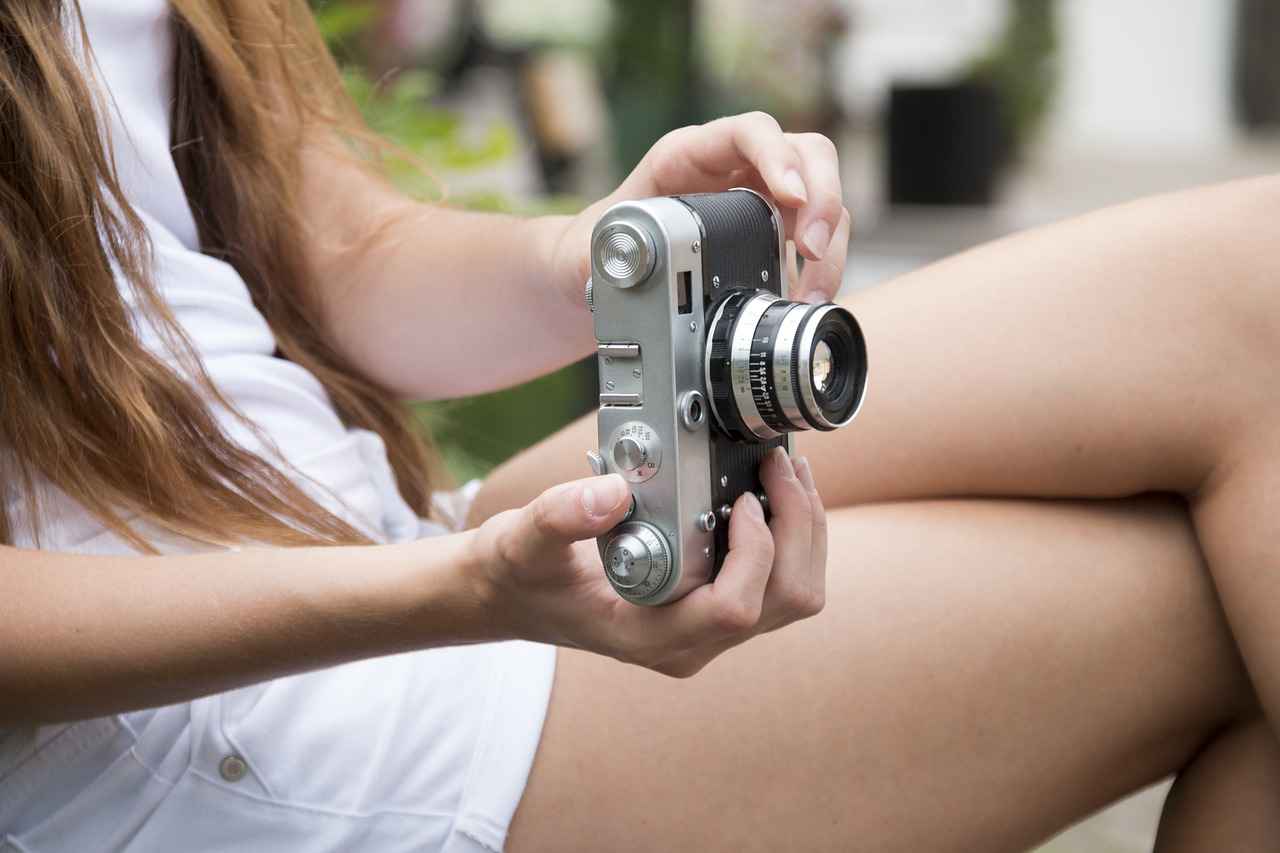
What Are Common Issues with Wireless Transfers?
Wireless video transfers have revolutionized the way we share and store footage from action cameras. However, despite the convenience they offer, users often face a variety of challenges that can hinder the process. Understanding these common issues and their solutions is essential for a smoother experience. This section delves into the most frequent problems encountered during wireless transfers and provides practical solutions to overcome them.
While wireless transfers are designed to be seamless, several factors can lead to complications. Below are some of the most common issues users may encounter:
- Slow Transfer Speeds
- Your devices are in close proximity to each other.
- There are minimal obstacles between the camera and smartphone.
- You are using a high-speed Wi-Fi connection when possible.
- Connection Drops and Failures
- Weak Wi-Fi or Bluetooth signals.
- Interference from other electronic devices.
- Outdated firmware on either device.
- Compatibility Issues
- You are using the correct app for your specific camera model.
- Your smartphone’s operating system is up to date.
- You check compatibility lists provided by manufacturers.
- File Corruption
- Interruption of the transfer.
- Insufficient storage space on the receiving device.
- Battery Drain
- Charge both devices before starting the transfer.
- Disable unnecessary background applications that may drain battery life.
Slow transfer speeds can be a major source of frustration. Factors such as signal interference, distance from the source device, and the size of the video files can all impact speed. To mitigate these issues, ensure that:
Connection drops can interrupt the transfer process and lead to incomplete files. Common causes include:
To prevent these issues, regularly update your devices and consider switching to a less congested Wi-Fi channel if you experience frequent drops.
Not all action cameras are compatible with every smartphone or app. Ensure that:
Sometimes, files may become corrupted during the transfer process. This can happen due to:
To avoid this, ensure your smartphone has enough storage and try to keep the transfer process uninterrupted.
Wireless transfers can consume a significant amount of battery power. To manage battery usage:
By being aware of these common issues and implementing the suggested solutions, users can enhance their wireless video transfer experience significantly. Staying informed and prepared will ensure that sharing your action camera footage is as smooth and enjoyable as possible.
Slow Transfer Speeds
Experiencing when sharing videos can be incredibly frustrating, especially when you are eager to showcase your latest adventures captured on your action camera. Understanding the various factors that contribute to these delays can help you mitigate them, ensuring a smoother and faster video-sharing experience.
Several factors can impact the speed of video transfers from your action camera to your smartphone:
- Connection Method: The choice between Bluetooth and Wi-Fi plays a crucial role. Bluetooth, while convenient, is generally slower and has a limited range compared to Wi-Fi.
- File Size: Larger video files take longer to transfer. High-resolution videos, such as those recorded in 4K, can significantly increase transfer times.
- Distance: The distance between your action camera and smartphone can affect signal strength. Greater distances can lead to weaker connections, resulting in slower speeds.
- Interference: Other electronic devices operating on similar frequencies can cause interference, reducing transfer speeds.
- Device Performance: The processing power of both your action camera and smartphone can influence transfer rates. Older devices may struggle with high-speed transfers.
To enhance your video transfer speeds, consider the following practical tips:
- Use Wi-Fi: Whenever possible, opt for a Wi-Fi connection over Bluetooth. This method is typically faster and more reliable for transferring large files.
- Reduce File Size: Before transferring, consider editing your videos to lower resolutions or compressing them. This can dramatically decrease transfer times.
- Minimize Distance: Keep your devices close together during the transfer process to ensure a strong connection.
- Avoid Interference: Try to conduct transfers in an environment with minimal electronic interference. Turn off other devices that may be using the same frequency.
- Update Firmware: Ensure that both your action camera and smartphone have the latest firmware updates installed. Manufacturers often release updates that improve performance and connectivity.
Many action cameras come with dedicated apps designed to optimize video transfers. These apps often include features that enhance connectivity and transfer speeds. Always check for the latest version of the app to benefit from any speed improvements or bug fixes.
If you have implemented these strategies and still experience slow transfer speeds, consider the following troubleshooting steps:
- Restart Devices: Sometimes, a simple restart of both your action camera and smartphone can resolve connectivity issues.
- Reset Connections: Disconnect and reconnect your devices to refresh the connection.
- Check for Background Processes: Ensure that no other apps are consuming bandwidth on your smartphone during the transfer.
By understanding the underlying factors that contribute to slow transfer speeds and implementing these solutions, you can significantly enhance your video-sharing experience. Faster transfers not only save time but also allow you to share your adventures with friends and family more efficiently.
Connection Drops and Failures
Connection drops can be a frustrating obstacle when trying to wirelessly transfer videos from your action camera to your smartphone. Understanding the potential causes of these connection failures is essential for ensuring a smooth transfer process. This section will examine common reasons for connection drops and provide practical solutions to prevent them.
One of the primary causes of connection drops is interference from other electronic devices. Wi-Fi signals can be disrupted by various household devices such as microwaves, cordless phones, and even neighboring Wi-Fi networks. To mitigate this issue, it is advisable to minimize the number of competing signals in your environment. Consider transferring videos in a space that is free from other electronic devices or switch to a less congested Wi-Fi channel if your camera allows it.
Another significant factor is the distance between your action camera and smartphone. Wireless connections, whether via Bluetooth or Wi-Fi, have a limited range. If the devices are too far apart, the connection may weaken and result in drops. To enhance connectivity, ensure that both devices are within close proximity during the transfer process. Ideally, keep them within a few feet of each other to maintain a strong signal.
Additionally, software issues can lead to connection failures. Outdated firmware on your action camera or smartphone can cause compatibility problems, resulting in interrupted transfers. Always check for software updates for both devices before initiating a transfer. Updating to the latest version ensures that you have the most reliable performance and features, reducing the likelihood of connection issues.
Furthermore, the battery levels of your devices can play a crucial role in maintaining a stable connection. Low battery levels may cause devices to operate inefficiently, leading to potential drops. Ensure both your action camera and smartphone are adequately charged before starting the transfer process. A fully charged battery not only provides better performance but also enhances the overall reliability of the connection.
To further prevent connection drops, consider using a dedicated transfer app that optimizes the connection between your action camera and smartphone. Many manufacturers provide proprietary apps designed to facilitate video transfers seamlessly. These apps often include features that help maintain a stable connection and can automatically adjust settings to enhance performance based on the current environment.
In summary, connection drops during video transfers can be caused by a variety of factors, including interference, distance, software issues, and battery levels. By addressing these potential problems proactively, you can significantly improve the reliability of your wireless video transfers. Always ensure that your devices are updated, charged, and close together to facilitate the best possible connection. With these strategies in place, you can enjoy a smoother and more efficient video transfer experience.
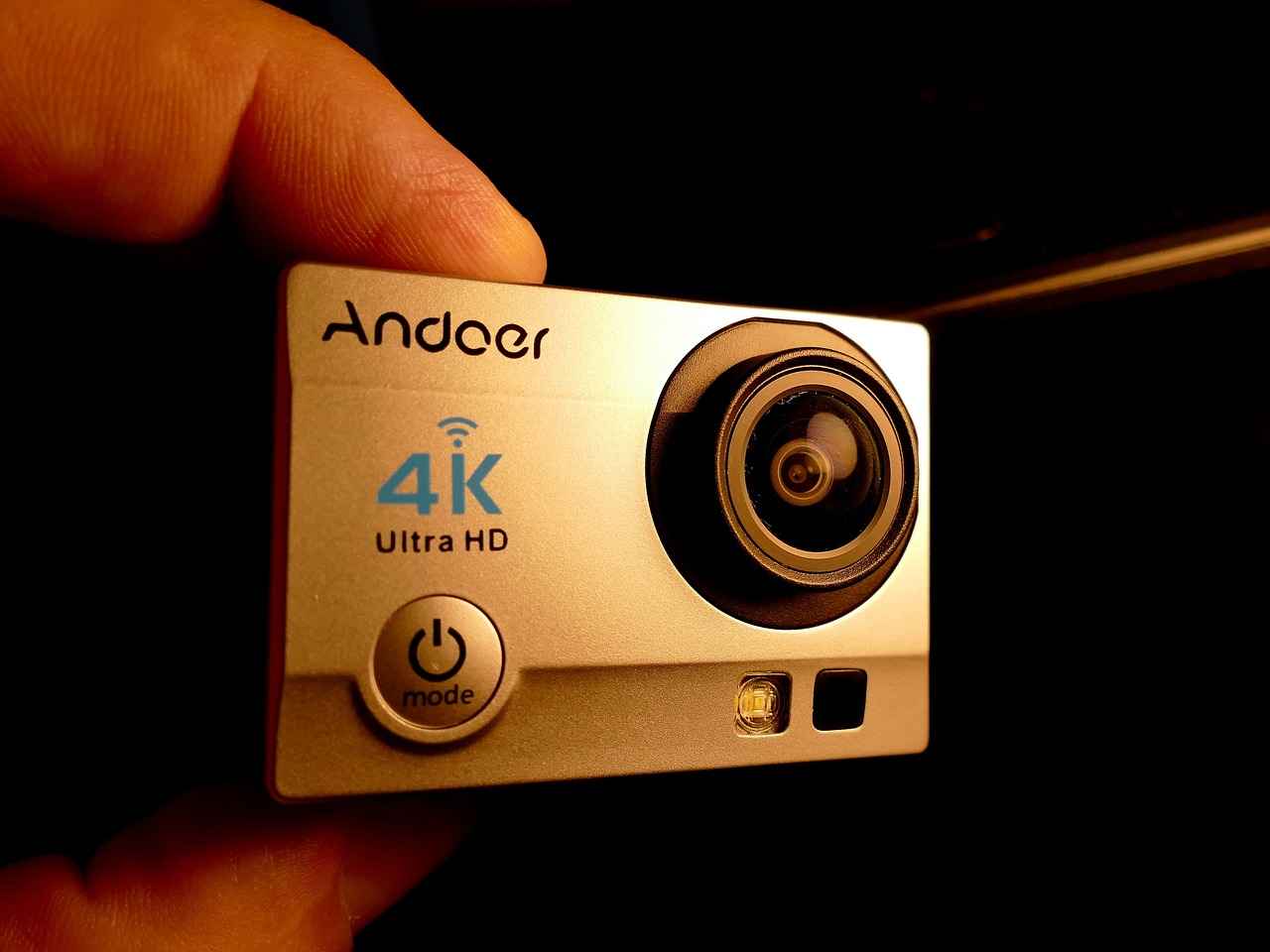
Is It Safe to Transfer Videos Wirelessly?
In today’s digital age, the convenience of transferring videos wirelessly from action cameras to smartphones is undeniable. However, with this convenience comes a significant concern: This question is particularly relevant given the increasing incidents of data breaches and cyber threats. In this section, we will explore the best practices to ensure the safety and privacy of your videos during the transfer process.
Wireless video transfers can expose your data to potential risks. These include:
- Unauthorized Access: Hackers may intercept data if proper security measures are not in place.
- Data Loss: Poor connectivity can lead to incomplete transfers, risking the loss of valuable footage.
- Malware Attacks: Transferring files over unsecured networks can introduce malware into your devices.
To mitigate these risks, consider the following best practices:
Always connect your action camera and smartphone using a secure Wi-Fi network, preferably one that is password-protected. Avoid public Wi-Fi networks, as they are often less secure.
Many modern devices offer encryption options for file transfers. Enable these features to ensure that your videos are protected during the transfer process.
Keeping your action camera and smartphone updated with the latest software and firmware is crucial. Updates often include security patches that protect against vulnerabilities.
When transferring videos, use only official manufacturer apps or well-reviewed third-party applications. These apps are more likely to have robust security features.
Keep an eye on the transfer process. If you notice any unusual activity, such as unexpected disconnections or slow transfer speeds, halt the process and investigate.
Before transferring videos, ensure you have a backup on another device or cloud storage. This way, if something goes wrong during the transfer, you won’t lose your precious footage.
Stay informed about the latest security trends and practices. Understanding how to protect your data can significantly reduce the risk of unauthorized access.
While the convenience of wireless video transfers is appealing, it is essential to prioritize the security of your data. By following these best practices, you can ensure that your videos remain safe and secure during the transfer process. Remember, being proactive about security can save you from potential headaches in the future.
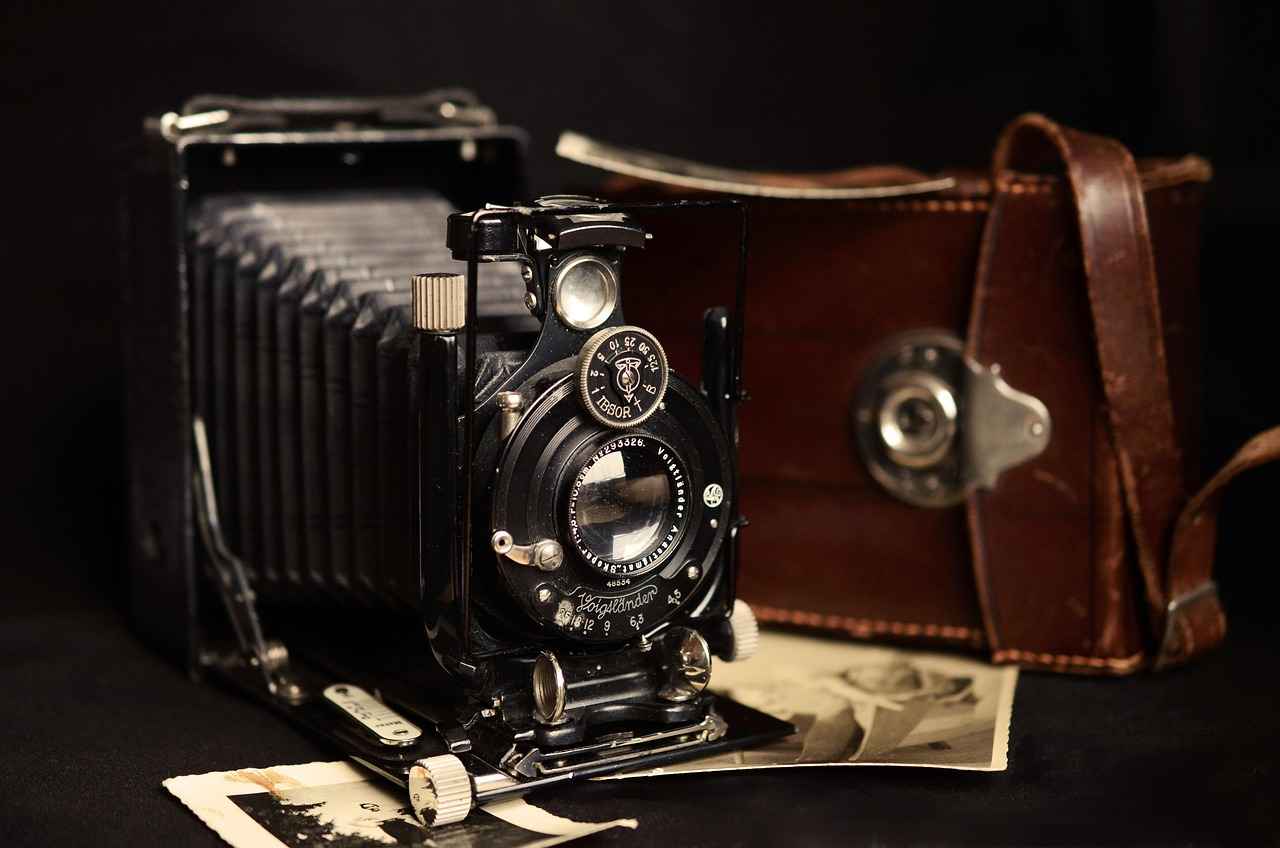
How to Transfer Videos from Different Action Camera Brands
When it comes to transferring videos from action cameras to smartphones, each brand has its own unique methods and processes. Understanding these differences can greatly enhance your experience and ensure a seamless transfer of your precious footage. This section provides a comparative overview of the transfer processes for popular action camera brands like GoPro, DJI, and Insta360.
GoPro cameras are renowned for their user-friendly interface and efficient video transfer methods. Utilizing the GoPro App, users can connect their cameras to smartphones via Wi-Fi. The app allows for quick access to media and offers editing features to enhance your videos before sharing.
- Step 1: Ensure your GoPro is powered on and in Wi-Fi mode.
- Step 2: Download and open the GoPro App on your smartphone.
- Step 3: Connect your smartphone to the GoPro’s Wi-Fi network.
- Step 4: Browse and select videos for transfer.
DJI offers a similar yet distinct approach with its action cameras, such as the Osmo Action. The DJI Mimo App is essential for transferring videos. Users can connect via Wi-Fi or Bluetooth, depending on the model, allowing for flexible transfer options.
- Step 1: Turn on your DJI camera and activate Wi-Fi.
- Step 2: Launch the DJI Mimo App on your mobile device.
- Step 3: Connect to the camera’s network.
- Step 4: Select and transfer your desired video files.
Insta360 cameras, known for their unique 360-degree capabilities, utilize the Insta360 App for video transfers. Users can connect their cameras through Wi-Fi or Bluetooth, similar to GoPro and DJI.
- Step 1: Power on your Insta360 camera and enable Wi-Fi.
- Step 2: Open the Insta360 App on your smartphone.
- Step 3: Connect to the camera’s Wi-Fi network.
- Step 4: Access your videos and initiate the transfer.
While transferring videos from these action cameras is generally straightforward, users may face challenges like slow transfer speeds or connectivity issues. Ensuring that your camera and smartphone are updated with the latest firmware can help mitigate these issues. Additionally, maintaining a strong Wi-Fi connection is crucial for a smooth transfer experience.
Each brand’s app may offer unique features that enhance the transfer process, such as video editing tools or cloud storage options. Familiarizing yourself with these features can maximize your workflow and improve your overall experience. Always refer to the user manual for specific instructions related to your model for the best results.

Future Trends in Wireless Video Transfer Technology
As we move further into the digital age, the landscape of wireless video transfer technology is rapidly evolving. This transformation is driven by the increasing demand for faster, more efficient methods of sharing high-quality video content. In this section, we will explore some of the most significant emerging trends and innovations that are set to enhance user experiences in the near future.
One of the most exciting advancements in wireless video transfer is the development of 5G technology. This next-generation mobile network promises to deliver ultra-fast data transfer speeds, significantly reducing the time it takes to upload and share videos. With 5G, users can expect to transfer large files in mere seconds, making it an ideal solution for action camera enthusiasts who need quick sharing capabilities.
Artificial intelligence (AI) is also playing a crucial role in the future of wireless video transfer. AI algorithms can optimize video compression, ensuring that files maintain their quality while reducing their size. This means faster uploads without sacrificing the integrity of the footage. Additionally, AI can assist in automating the editing process, allowing users to enhance their videos seamlessly before sharing.
Cloud storage solutions are becoming increasingly integrated with wireless video transfer technologies. Users can upload their videos directly to the cloud from their action cameras, making them accessible from any device at any time. This not only simplifies the sharing process but also provides a secure backup for important footage. Services like Google Drive, Dropbox, and specialized platforms for video storage are evolving to support these functionalities.
Emerging protocols such as Wi-Fi 6 and Bluetooth 5.0 are also set to revolutionize video transfer. Wi-Fi 6 offers higher throughput and better performance in crowded environments, ensuring that users can transfer videos without interruptions. Meanwhile, Bluetooth 5.0 enhances connection stability and range, allowing for more reliable transfers over longer distances.
As technology progresses, user interfaces are becoming more intuitive and user-friendly. Many action camera manufacturers are focusing on developing apps that simplify the transfer process, incorporating features like drag-and-drop functionality and real-time previews. This evolution aims to make video sharing accessible to users of all skill levels, encouraging more people to engage with their footage creatively.
With the rise of wireless technology, security remains a top concern. Future innovations are focusing on enhancing the security of video transfers through advanced encryption methods and secure authentication protocols. Users can expect more robust measures to protect their content from unauthorized access, ensuring that their videos remain private and secure.
In summary, the future of wireless video transfer technology is bright, with innovations in 5G, AI, cloud storage, and enhanced protocols paving the way for a more efficient and user-friendly experience. As these technologies continue to develop, users can look forward to a seamless integration of video sharing into their daily lives, allowing them to capture and share their adventures with ease.
Frequently Asked Questions
- What is the easiest way to transfer videos from my action camera to my phone?
The easiest way is to use the official app provided by your action camera’s manufacturer. Most apps offer a user-friendly interface that simplifies the transfer process, allowing you to quickly share your videos without any hassle.
- Can I transfer videos using Bluetooth?
Yes, you can transfer videos using Bluetooth, but it may be slower compared to Wi-Fi. Bluetooth is great for smaller files, but for larger video files, Wi-Fi is recommended for a faster transfer experience.
- What should I do if my video transfer is slow?
If you’re experiencing slow transfer speeds, try moving closer to your action camera to improve the connection. Additionally, ensure that no other devices are connected to the same Wi-Fi network, as this can affect speed.
- Are there any security concerns with wireless transfers?
Yes, security is always a concern with wireless transfers. To keep your videos safe, use a secure Wi-Fi connection and avoid transferring sensitive content over public networks.
- How do I troubleshoot connection issues during transfer?
If you encounter connection drops, first check that both devices have Bluetooth or Wi-Fi enabled. Restart both devices if necessary, and ensure they are within range. If problems persist, consult the user manual for troubleshooting tips specific to your camera model.
